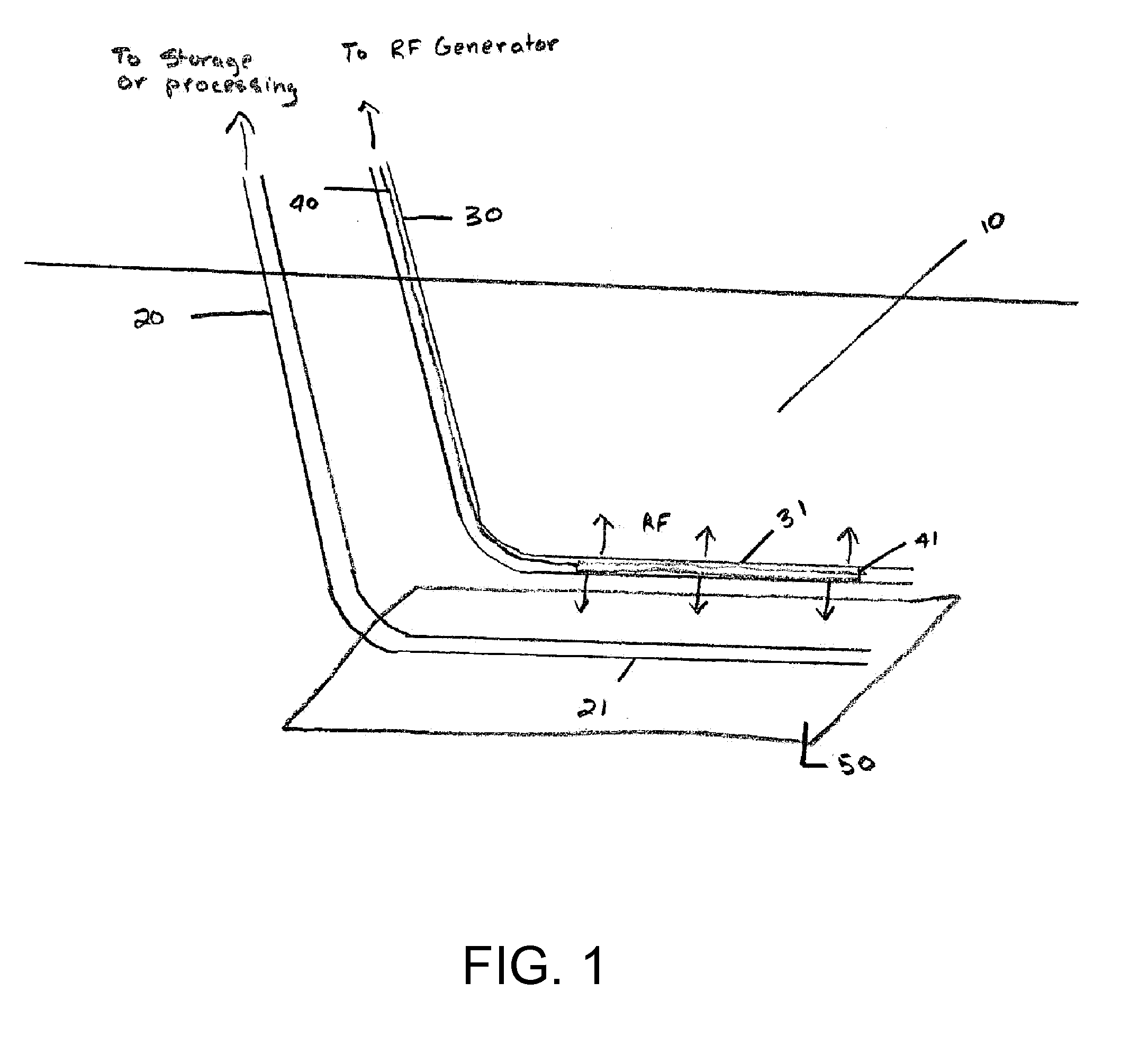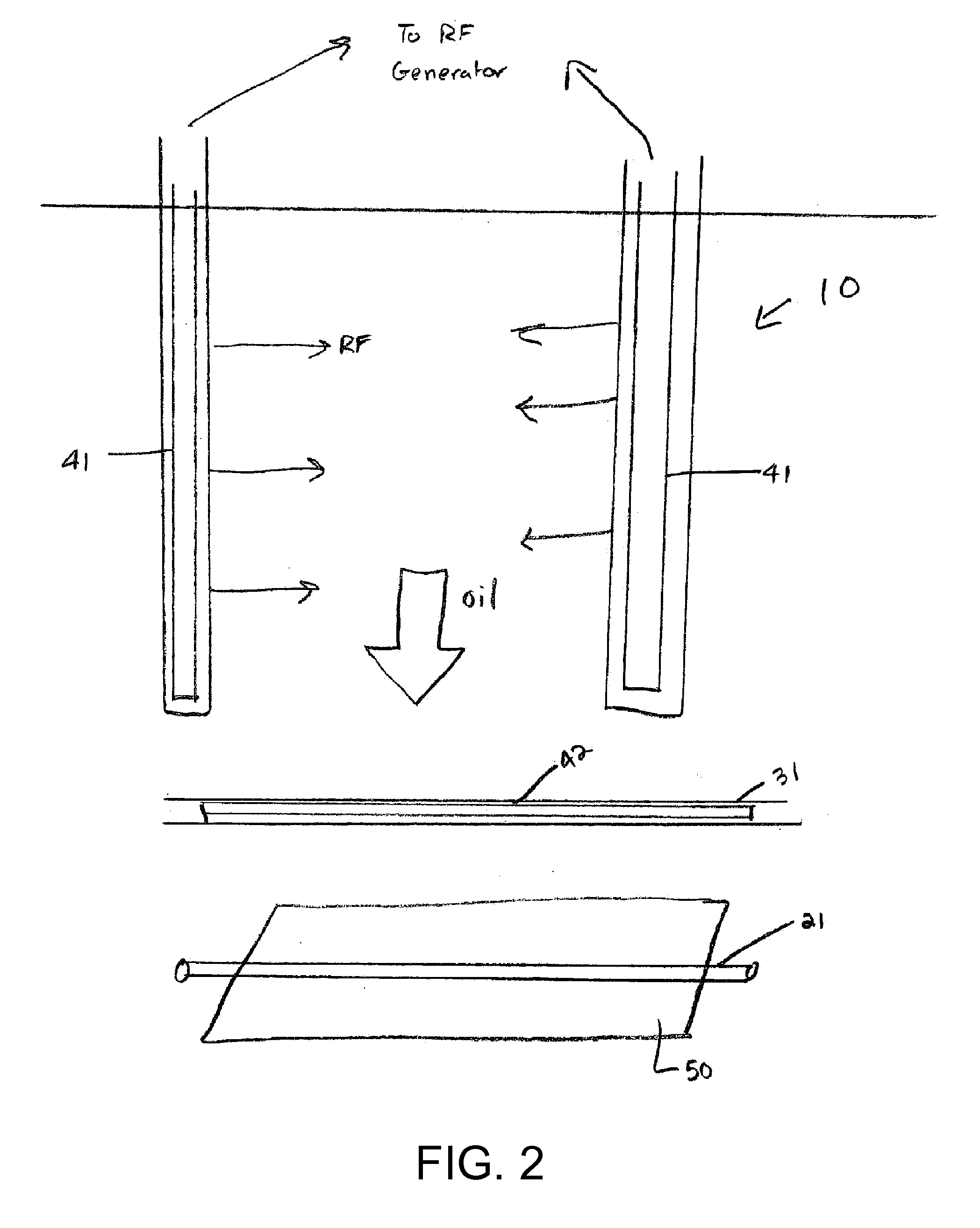Method and apparatus for in-situ radiofrequency assisted gravity drainage of oil (RAGD)
a technology of radiofrequency assisted gravity and oil, which is applied in the direction of fluid removal, insulation, borehole/well accessories, etc., can solve the problems of viscosity, specific gravity of oil, difficult recovery and transportation, etc., and achieve the effect of enhancing the recovery of heavy crude oil
- Summary
- Abstract
- Description
- Claims
- Application Information
AI Technical Summary
Benefits of technology
Problems solved by technology
Method used
Image
Examples
Embodiment Construction
[0043]A variety of different arrangements of wells and antennae may be employed to apply radiofrequency energy to heavy crude oil in situ, thereby enhancing oil recovery and achieving in situ upgrading of the oil. The proper structure and arrangement for any particular application depends on a variety of factors, including size of field, depth, uniformity, and nature and amount of water and gases in the field.
[0044]FIG. 1 is a perspective view of a basic in situ radiofrequency reactor. Heavy oil is present in oil field 10. Oil / gas production well 20 is drilled into the oil field for recovery of heavy oil and other materials. At least a portion of oil / gas production well 20 is drilled horizontally through the oil field. Horizontal oil / gas production well 21 is positioned to receive oil and other gas that are moved or generated by the action of the radiofrequency reactor. A second well, radiofrequency well 30, is drilled into the oil field in proximity to oil / gas production well 20. A...
PUM
 Login to View More
Login to View More Abstract
Description
Claims
Application Information
 Login to View More
Login to View More - R&D
- Intellectual Property
- Life Sciences
- Materials
- Tech Scout
- Unparalleled Data Quality
- Higher Quality Content
- 60% Fewer Hallucinations
Browse by: Latest US Patents, China's latest patents, Technical Efficacy Thesaurus, Application Domain, Technology Topic, Popular Technical Reports.
© 2025 PatSnap. All rights reserved.Legal|Privacy policy|Modern Slavery Act Transparency Statement|Sitemap|About US| Contact US: help@patsnap.com



